Land-use change—for example, turning cropland into forest—alters soil organic carbon (SOC) storage to different degrees depending on soil type. Data from the German national agricultural and forest soil inventories and new modeling techniques show that, while most of this SOC change occurs in the topsoil, 30% occurs below 30 cm depth. These insights can help improve agricultural carbon accounting and emissions reporting, aiding in global efforts to mitigate climate change.
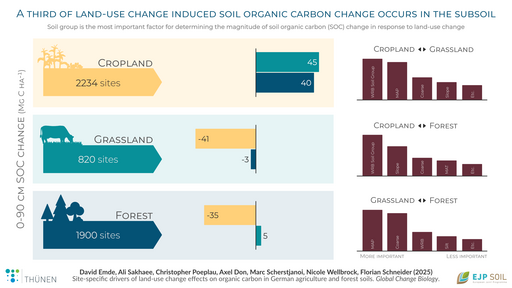
Using data and compiled historical land-use histories for the 3104 sites of the German Agricultural Soil Inventory, we investigated how converting grasslands to croplands, or vice versa, alters organic carbon in soils. We found that soils continue to experience changes to organic carbon stocks for many decades after conversion and that a new equilibrium is reached at very different rates depending on the direction of land-use change.
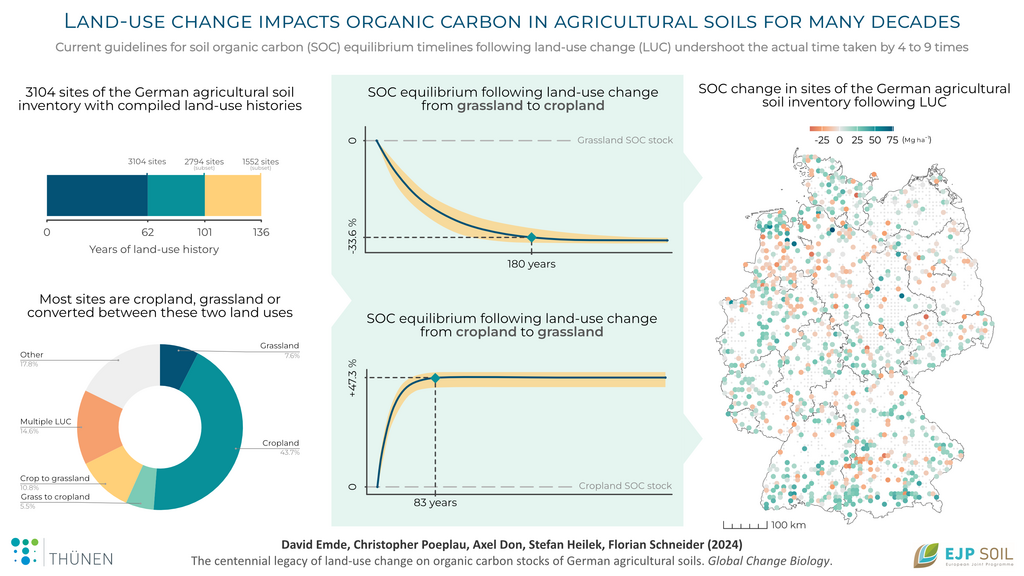
Sequestration of carbon in soils can lead to climate change mitigation or even negative emissions. However, not all measures enhancing soil C result in such C uptake from the atmosphere or negative emissions. At some sites, measures may only reduce C losses (C loss mitigation) or may be counterbalanced by elevated other greenhouse gas emissions. A more rigorous use of the terms surrounding C sequestration in soils is prerequisite in order to enhance understanding of climate change mitigation efforts in the land-use sector among stakeholders in science, politics, and society.
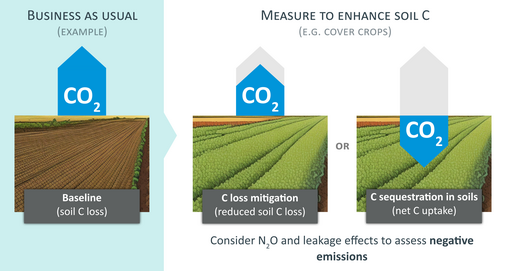
This study addresses the growing consensus that soils offer an unparalleled opportunity to sequester additional carbon from the atmosphere in efforts to mitigate anthropogenic greenhouse gas emissions by estimating the mineral-associated organic carbon (MAOC) formation capacity and deficits of soils in the Okanagan Valley, British Columbia, Canada. We found that MAOC deficits were present in all soils and increased with depth, and that the upper 30 cm of these soils have the potential to increase MAOC stocks by 29% before they reach formation capacity.
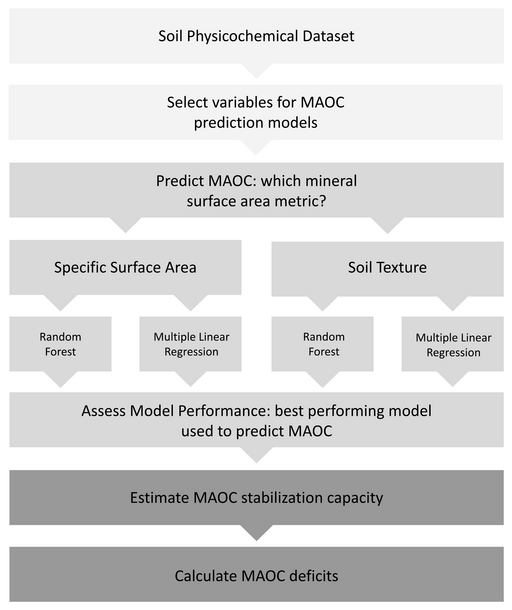
Several decades of woody perennial crop cultivation in the Okanagan Valley, British Columbia, Canada has substantially increased both particulate and mineral-associated organic carbon. This increase, however, is crop dependent. Carbon isotope analysis showed that carbon in perennial cropping systems is less microbially processed than their soil counterparts under natural vegetation.
Highlights
Irrigated agriculture is expanding across the globe, but the effects of irrigation on soil organic carbon (SOC) stocks are poorly understood. We conducted a meta-analysis to examine changes in SOC on irrigated agricultural sites. In contrast to many agricultural systems, which tend to lose soil carbon with time, we found that SOC increased by 5.9% on irrigated sites, overall. SOC increases were greatest in surface soils, in finer-textured soils, in drier climates and under sprinkler irrigation.
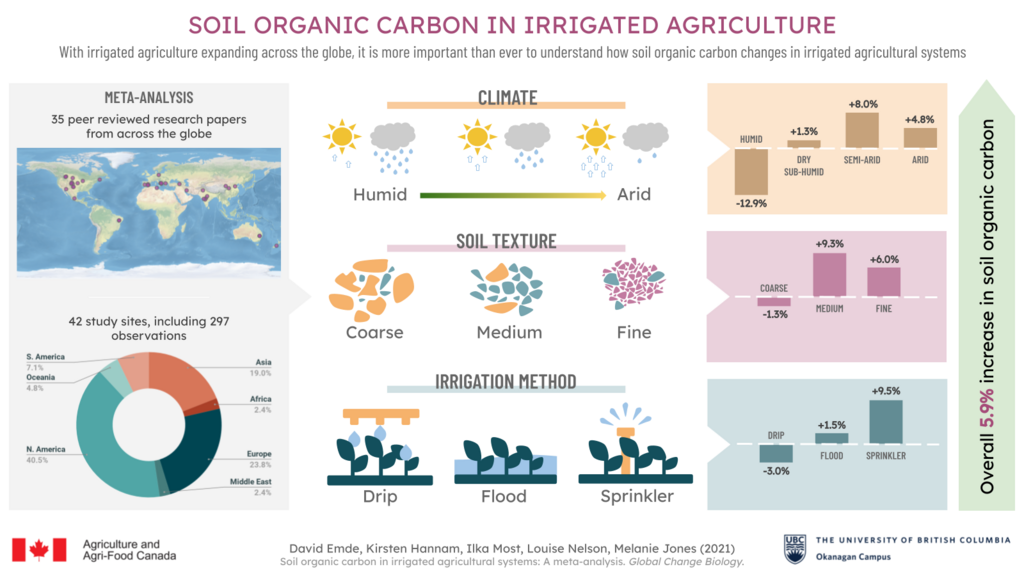
Crop and drive row carbon stocks were analysed under irrigated perennial woody crops in the Okanagan Valley, Canada. We found that soil carbon was spatially heterogeneous across all sites, with the surface soil of drive rows containing more carbon than crop rows, and that soils are responsive to changes in crop and associated management practices.
Highlights